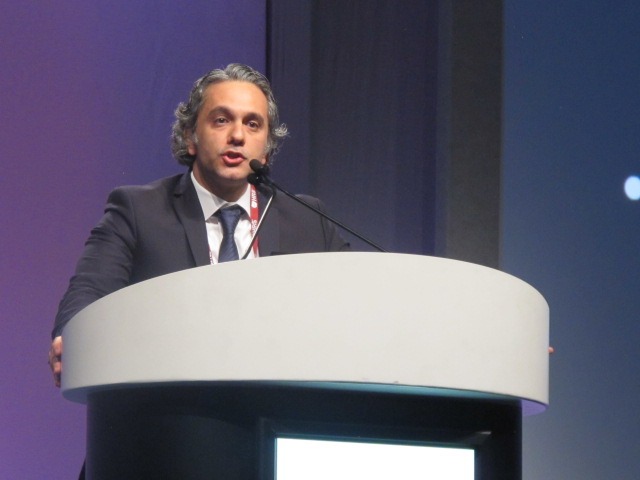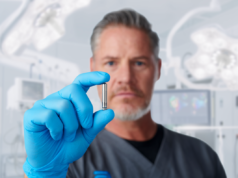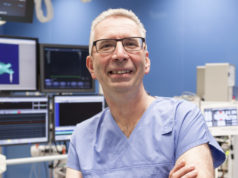
The Micra leadless pacemaker continues to demonstrate a high implant success rate and a low level of major complications at 30 days in a real world setting, and in the hands of operators with no prior experience in Micra implantation. In addition, rates of pericardial effusion, device dislodgment, and infection remain low. Registry results from the follow-up to the Micra IDE investigational trial were presented at a late breaking trial session at the Heart Rhythm Society’s 38th Annual Scientific Sessions (10‒13 May, Chicago, USA).
First-in-man studies of leadless pacemakers demonstrate a high rate of implant success. Key results of the investigational trial (Micra IDE) were a 99.2% successful implantation rate, and a major complication rate from cardiac effusion or perforation of 1.6%. All safety and efficacy objectives were achieved, and there were no dislodgments or infections. Several concerns remain about the reproducibility of these positive findings in the real world. In particular some concerns remain about the rate of pericardial effusion.
Mikhael F El-Chami, from the school of medicine at Emory University in Atlanta, Georgia, outlined the interim analysis of the Micra post-approval registry, a global study on acute performance. “While the Micra IDE trial results are reassuring, questions remain about the reproducibility of these positive findings in the real world, and outside an investigational trial. The Micra post-approval registry was designed to assess the safety and performance of the Micra pacemaker in a real world setting, and in the hands of new operators.”
Inclusion criteria for the ongoing prospective single arm observational study were any patient who was approached for implantation with a Micra device. First enrolment occurred in July 2015 and is still continuing. The projected total number of patients to be enrolled in this study is 1,830, at 200 sites around the world. The safety endpoint was system- or procedure-related major complications at 30 days post-implant, with the major complication definition the same as that used in the IDE trial. Any event that led to death, hospitalisation, prolonged hospitalisation, system revision, or loss of device therapy met the criteria for a major complication.
El-Chami said: “The implant success rate was excellent—792 patients out of 795 had a successful attempt. This is a 99.6% success rate. And 87% of implanters were new implanters and had no prior experience with implanting a Micra pacemaker. The procedure took an average of 25 minutes, which is very short. And more than 50% of devices were placed in a septal location.”
Through 30 days post-implant, 13 major complications occurred in 12 patients, a rate of 1.51%, lower than that in the investigational trial. No major complications were due to battery or telemetry issues. Of the 22 deaths, six were cardiac, 12 were non-cardiac, and four unknown. One death was adjudicated as being due to the Micra procedure in a patient with severe aortic valve disease who developed pulmonary oedema the day after the procedure; none were related to the Micra device.
Almost one in five patients had a condition precluding the use of a transvenous pacemaker. And 15% had a previously implanted cardiac electronic device, an exclusion criteria of the investigational study.
El-Chami said: “The rate of infection in this study and the Micra IDE study is extremely low. If you look at this trial, 15% of patients actually had a pre-existing device. Most of them were Micra implantation after extraction for a device infection. In patients who are immunocompromised, diabetic, have renal failure, or a high risk of infections, this device will offer a potential and significant advantage over transvenous pacemakers.”
El-Chami said low rates of pericardial effusion were due to an extensive training strategy that focused on a septal location for device placement. “The major cause for the reduction in pericardial effusion is focusing on physician training and aiming for the septum, rather than the apex. In the IDE study, 66% were placed in the apex; in the registry, 40% were placed at the apex, the rest were in a septal location.”
And, he concluded: “These real world data reinforce the positive results seen in the IDE trial. Performance will continue to be evaluated in this ongoing trial.”












